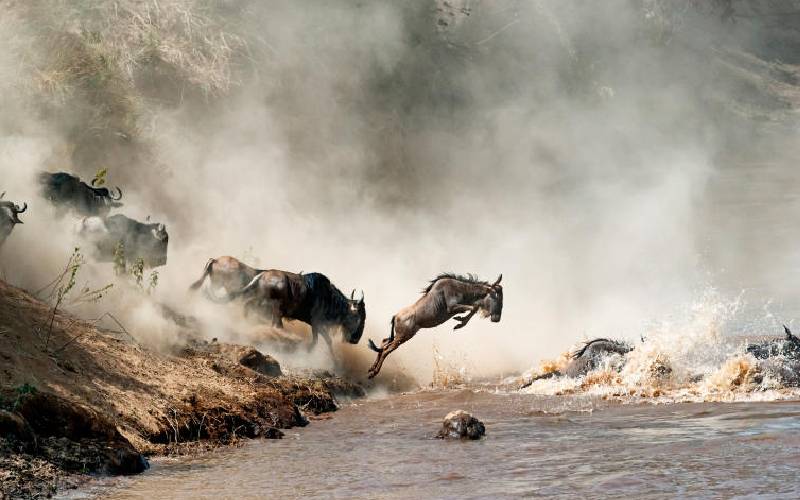×
The Standard e-Paper
Home To Bold Columnists

Migrating wildebeest in mid-air leaping into the dangerous Mara River with dusty dramatic background. [Courtesy]
A report on wildlife migratory corridors in Kenya has laid bare the havoc infrastructural development has caused along the routes. Conservationists have also raised the alarm over the situation they say has extended from Athi-River, all the way to Tarangire in Tanzania, leaving a trail of destruction of the ecosystem.